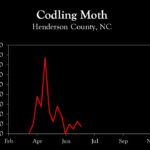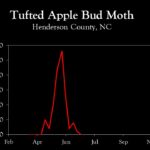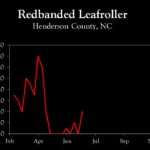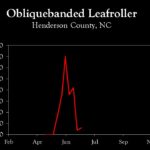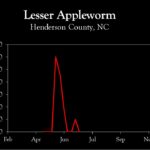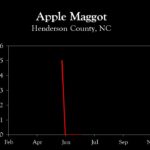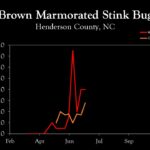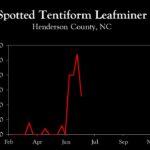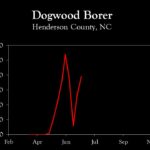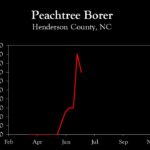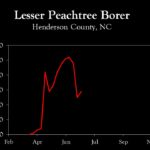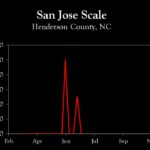WNC Orchard Insect Pest Populations – July 6, 2021
go.ncsu.edu/readext?807438
en Español / em Português
El inglés es el idioma de control de esta página. En la medida en que haya algún conflicto entre la traducción al inglés y la traducción, el inglés prevalece.
Al hacer clic en el enlace de traducción se activa un servicio de traducción gratuito para convertir la página al español. Al igual que con cualquier traducción por Internet, la conversión no es sensible al contexto y puede que no traduzca el texto en su significado original. NC State Extension no garantiza la exactitud del texto traducido. Por favor, tenga en cuenta que algunas aplicaciones y/o servicios pueden no funcionar como se espera cuando se traducen.
Português
Inglês é o idioma de controle desta página. Na medida que haja algum conflito entre o texto original em Inglês e a tradução, o Inglês prevalece.
Ao clicar no link de tradução, um serviço gratuito de tradução será ativado para converter a página para o Português. Como em qualquer tradução pela internet, a conversão não é sensivel ao contexto e pode não ocorrer a tradução para o significado orginal. O serviço de Extensão da Carolina do Norte (NC State Extension) não garante a exatidão do texto traduzido. Por favor, observe que algumas funções ou serviços podem não funcionar como esperado após a tradução.
English
English is the controlling language of this page. To the extent there is any conflict between the English text and the translation, English controls.
Clicking on the translation link activates a free translation service to convert the page to Spanish. As with any Internet translation, the conversion is not context-sensitive and may not translate the text to its original meaning. NC State Extension does not guarantee the accuracy of the translated text. Please note that some applications and/or services may not function as expected when translated.
Collapse ▲With the exception of the second generation coding moth flight, overall insect activity remains low throughout the region.
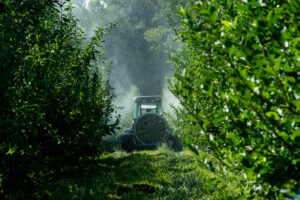 Codling moth degree-day accumulations since biofix range from about 1215 in Henderson County to almost 1700 in the Cleveland County area. The 1700 DD in lower elevations correlates with about 70% emergence of moths and 30% egg hatch, so this is an important time to be monitoring to determine the need for insecticide sprays. While in most situations a single insecticide application at about 1450 DD is sufficient for second-generation codling moth, two applications may be needed under higher population pressure. If traps are capturing more than 5 to 7 moths per week, an insecticide is recommended. Remember to use an insecticide with a different mode of action than was used against the first generation.
Codling moth degree-day accumulations since biofix range from about 1215 in Henderson County to almost 1700 in the Cleveland County area. The 1700 DD in lower elevations correlates with about 70% emergence of moths and 30% egg hatch, so this is an important time to be monitoring to determine the need for insecticide sprays. While in most situations a single insecticide application at about 1450 DD is sufficient for second-generation codling moth, two applications may be needed under higher population pressure. If traps are capturing more than 5 to 7 moths per week, an insecticide is recommended. Remember to use an insecticide with a different mode of action than was used against the first generation.
In Henderson County and higher elevations (≥2000 ft), the optimum timing for second-generation codling moth control (1400 to 1450 DD) is expected to occur in about 7 to 10 days.
It should be noted that it is rare for insecticides to be needed against second-generation codling when mating disruption is being used. A supplemental insecticide is recommended in mating disruption orchards only if the weekly cumulative moth capture exceeds 3 moths per trap.
Regarding oriental fruit moth, we are currently at the beginning of second and third generation egg hatch period in Henderson and Cleveland Counties, respectively. This typically coincides with relatively high moth captures in traps in orchards with high populations, such as at our research blocks at the Mountain Horticultural Crops Research Station. However, populations remain low in most commercial orchards.
Brown marmorated stink bug nymphs are becoming common on pheromone traps, but we remain at least 10 to 14 days away from first generation adult emergence in Cleveland County, and even longer in higher elevation orchards.
Learn more about southeastern apple insect pests at the Apple Insect Management page.
2021 Average Weekly Trap Captures
| HENDERSON COUNTY | |||
| Insects per trap | |||
| Jun 21 | Jun 28 | Jul 6 | |
| Codling moth | 1.0 | 2.5 | 1.5 |
| Oriental fruit moth | 34.0 | 36.0 | 33.5 |
| Tufted apple bud moth | 4.0 | 1.0 | 0.0 |
| Redbanded leafroller | 2.0 | 0.0 | 4.0 |
| Obliquebanded leafroller | 21.0 | 2.0 | 3.0 |
| Lesser appleworm | 0.0 | 2.0 | 0.0 |
| Apple maggot (abandoned and research orchards) | 0.0 | 0.0 | 0.0 |
| Brown marmorated stink bug (commercial) | 1.8 | 1.7 | 2.8 |
| Brown marmorated stink bug (unsprayed) | 2.0 | 4.0 | 4.0 |
| Spotted tentiform leafminer | 20.0 | 27.0 | 13.0 |
| Dogwood borer | 6.0 | 27.0 | 39.0 |
| Peachtree borer | 6.0 | 18.0 | 14.0 |
| Lesser peachtree borer | 48.0 | 25.0 | 29.0 |
| San Jose scale | 0.0 | 2.5 | 0.0 |
*Note that these averages illustrate only the timing of insect emergence and fluctuations in populations, and are not representative of population levels in any given orchard. The only way to have an accurate assessment of an individual orchard’s populations is to set up traps in that orchard.
2021 Accumulated Degree Days
| HENDERSON COUNTY | ||||
| Jun 21 | Jun 28 | Jul 6 | ||
| Codling moth (Biofix: April 10) |
927 | 1100 | 1220 | |
| Oriental fruit moth (Biofix: March 27) |
1353 | 1571 | 1721 | |
| Tufted apple bud moth (Biofix: April 30) |
994 | 1212 | 1362 | |
2021 Pest Trends (click to enlarge)
Visit WNC Orchard Insect Populations for archived posts.



